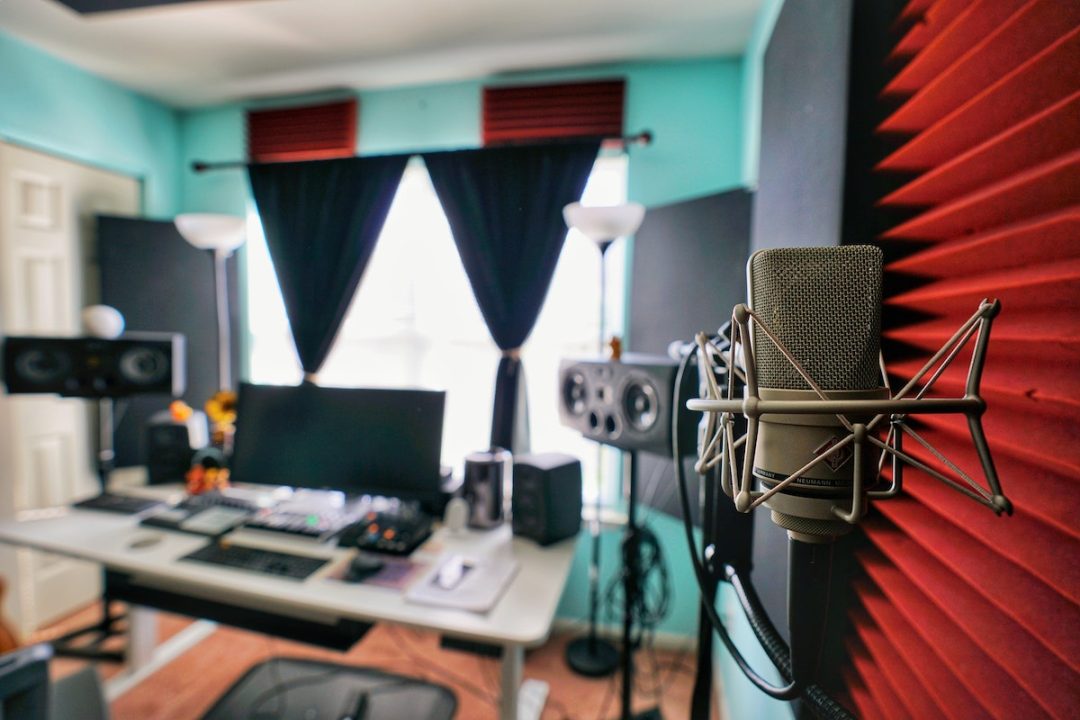Acoustic treatment is one of the best investments you can make in your home studio. Sound waves quite literally bounce around the room, making some frequencies unnaturally loud and cancelling others out. As you can imagine, this leads to a whole bunch of problems when it comes to critical listening. Sound absorbing foam panels are an easy way to mitigate acoustic issues in your home studio.
Soundproofing vs. Sound Absorbing — What’s the Difference?
Sometimes you’ll hear beginners using these terms interchangeably, but there’s a clear distinction between them. Soundproofing concerns itself with preventing sound from entering or leaving a room. Sound absorption, the biggest form of acoustic treatment, concerns itself with controlling reflections within a room. It doesn’t completely isolate a space, but rather attempts to minimize the effects that bad room sound can have on a mixing/mastering session.
Professional studios rely on a combination of both. Soundproofing keeps unwanted noise from getting into or escaping a room, while absorbers and acoustic treatment helps a room sound its best for recording, mixing, and mastering. In your home studio, you’ll mostly be concerned with sound absorbing foam or other kinds of treatment to take care of the reflections in the room.
Types of Acoustic Treatment
There are three main kinds of acoustic treatment that solve different problems. You can get foam versions of all three, since that’s what we’re focusing on, but the key here is to understand what you’ll need to treat the room.
Bass Traps
Bass traps do exactly what they say—tame low-end buildup, which is one of the worst problems in any small room. Traps are much thicker than a regular absorber, and they go in the corners of the room where low frequencies accumulate.
Absorbers
These are the bread and butter of acoustic treatment. By any name—absorption panels, absorbers, sound absorbing foam—these guys handle midrange and high frequency reflections.
Diffusers
While bass traps and absorbers neutralize frequencies, diffusers scatter sound waves evenly throughout the space. They try to keep a room lively yet controlled, so you get a little feedback from the room, but you can trust your listening environment to be accurate.
Understanding Acoustic Foam Placement
If you’re treating a home studio on a budget, focus on the first reflection points. That’s the bare minimum, but even if you stop there, you’ve done yourself a massive favor.
First reflection points are as follows:
- On the walls directly to the sides of each speaker
- On the wall directly behind each speaker
- On the ceiling above the speakers
- On the back wall behind the listening position
You can use sound absorbing foam to treat the early reflections. Many folks will opt for diffusion on the back walls instead of extra absorption, but it ultimately comes down to the layout of the room, how reflective and echoey the space is, and a ton of other factors personal to your room.
Helpfully, Sweetwater offers free consultations for acoustic treatment and will recommend the best setup given the size of your home studio. Just a quick disclaimer, as Produce Like A Pro is a Sweetwater affiliate; regardless, it really helps a ton to not only get the best bang for your buck, but the right stuff for the studio.
Best Sound Absorbing Acoustic Panels
Here are some companies offering effective sound absorbing foam panels for home studios.
Auralex
Auralex is one of biggest names in acoustic foam. They have everything—absorbers, bass traps, and diffusers. Getting started with something like the Alpha DST-Roominator Kit is a good way to go. It comes with bass traps for each corner, and a whole bunch of one-foot by one-foot absorbers.
If that seems like overkill for your room, start by checking out the 24-pack of two-inch thick 1′ x 1′ “wedgies.”
Primacoustic
Primacoustic does an amazing job of balancing performance and clean, professional looks. Their panels aren’t what we’d traditionally consider foam, and they actually offer greater absorbing power.
The London 8 Acoustic Room Kit is great for smaller spaces. It comes with four control columns and eight scatter blocks. Of course, Primacoustic offers a range of kits and individual pieces for any room.
GIK Acoustics
GIK Acoustics makes attractive foam squares approximately two-feet by two-feet and 2.25″ thick. These absorber/diffuser hybrids come with an elegantly carved wooden front that diffuses some sound waves while others are absorbed by the foam.
Foamily
Foamily comes in as the most cost-effective option. Their sound absorbing foam panels come in 12-packs for around $20. On a shoestring budget, you can actually do some reasonable cleanup with these. In any case, something is better than nothing!
Conclusion: Sound Absorbing Foam
Sound absorbing foam takes a lot of the guesswork out of acoustic treatment. These are specially designed pieces—all you have to do is place them in the right spots, and they’ll do the rest.
One thing to keep in mind, though, is that foam gets pricey for the best quality stuff. You can always DIY some absorbers for a lot less money, and the same, if not more, effectiveness. Most experts will caution you against treating your space with just foam. It is very useful, especially in home studios, or this article wouldn’t exist. But it struggles to match up with good ol’ fashioned rock wool panels and gets incredibly expensive if you’re trying to do proper/extensive treatment using only foam.
